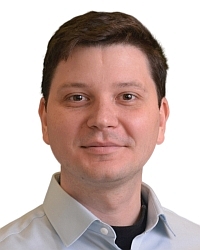TR2024-133
Autonomous Robotic Assembly: From Part Singulation to Precise Assembly
-
- , "Autonomous Robotic Assembly: From Part Singulation to Precise Assembly", IEEE/RSJ International Conference on Intelligent Robots and Systems., DOI: 10.1109/IROS58592.2024.10802423, October 2024, pp. 13525-13532.BibTeX TR2024-133 PDF
- @inproceedings{Ota2024oct,
- author = {Ota, Kei and Jha, Devesh K. and Jain, Siddarth and Yerazunis, William S. and Corcodel, Radu and Shukla, Yash and Bronars, Antonia and Romeres, Diego},
- title = {{Autonomous Robotic Assembly: From Part Singulation to Precise Assembly}},
- booktitle = {IEEE/RSJ International Conference on Intelligent Robots and Systems.},
- year = 2024,
- pages = {13525--13532},
- month = oct,
- publisher = {IEEE},
- doi = {10.1109/IROS58592.2024.10802423},
- issn = {2153-0866},
- url = {https://www.merl.com/publications/TR2024-133}
- }
- , "Autonomous Robotic Assembly: From Part Singulation to Precise Assembly", IEEE/RSJ International Conference on Intelligent Robots and Systems., DOI: 10.1109/IROS58592.2024.10802423, October 2024, pp. 13525-13532.
-
MERL Contacts:
-
Research Areas:
Abstract:
Imagine a robot that can assemble a functional product from the individual parts presented in any configuration to the robot. Designing such a robotic system is a complex problem which presents several open challenges. To bypass these challenges, the current generation of assembly systems is built with a lot of system integration effort to provide the structure and precision necessary for assembly. These systems are mostly responsible for part singulation, part kitting, and part detection, which is accomplished by intelligent system design. In this paper, we present autonomous assembly of a gear box with minimum requirements on structure. The assembly parts are randomly placed in a two-dimensional work environment for the robot. The proposed system makes use of several different manipulation skills such as sliding for grasping, in- hand manipulation, and insertion to assemble the gear box. All these tasks are run in a closed-loop fashion using vision, tactile, and Force-Torque (F/T) sensors. We perform extensive hardware experiments to show the robustness of the proposed methods as well as the overall system. See supplementary video at https://www.youtube.com/watch?v=cZ9M1DQ23OI.
Related News & Events
-
NEWS Diego Romeres Delivers Invited Talks at Fraunhofer Italia and the University of Padua Date: July 16, 2025 - July 18, 2025
MERL Contact: Diego Romeres
Research Areas: Artificial Intelligence, Control, Machine Learning, Optimization, Robotics, Human-Computer InteractionBrief- MERL researcher Diego Romeres was invited to present MERL's latest research at two institutions in Italy this July, focusing on human-robot collaboration and LLM-driven assembly systems.
On July 16th, Dr. Romeres delivered a talk titled “Human-Robot Collaborative Assembly” at Fraunhofer Italia – Innovation Engineering Center (EIC) in Bolzano. His presentation showcased research on human-robot collaboration for efficient and flexible assembly processes. Fraunhofer Italia EIC is a non-profit research institute focused on enabling digital and sustainable transformation through applied innovation in close collaboration with both public and private sectors.
Two days later, on July 18th, Dr. Romeres was hosted by the University of Padua, one of Europe’s oldest and most renowned universities. His invited lecture, “Robot Assembly through Human Collaboration & Large Language Models”, explored how artificial intelligence can enhance human-robot synergy in complex assembly tasks.
- MERL researcher Diego Romeres was invited to present MERL's latest research at two institutions in Italy this July, focusing on human-robot collaboration and LLM-driven assembly systems.
Related Publication
- @article{Ota2024jun,
- author = {Ota, Kei and Jha, Devesh K. and Jain, Siddarth and Yerazunis, William S. and Corcodel, Radu and Shukla, Yash and Bronars, Antonia and Romeres, Diego},
- title = {{Autonomous Robotic Assembly: From Part Singulation to Precise Assembly}},
- journal = {arXiv},
- year = 2024,
- month = jun,
- url = {https://arxiv.org/abs/2406.05331}
- }



